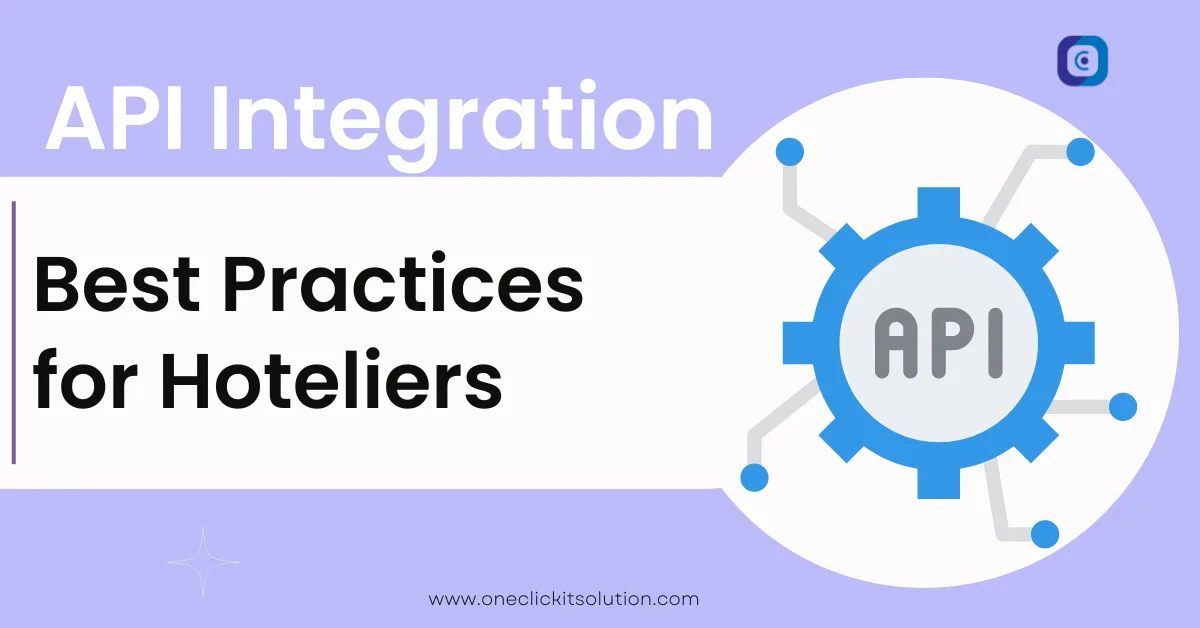API Integration Best Practices for Hoteliers

Do you go through stress when you try to integrate your Hotel APIs? Discover in this blog post the best way to integrate your APIs efficiently. This will help you boost your guest experience and efficiency.
What is API Integration, and How Does It Help Your Hotel Business?
API integration is a way of connecting different software systems you use in your hotel so these systems can share information. With this connection, your hotel can run more smoothly, save time, and improve how everything works together. This process makes your hotel more efficient and provides better service to your guests.
Integrating Systems Through API
1. Identify Integration Needs:
To start with, you need to determine which systems you need to connect.
2. Choose API-Friendly Systems:
Next, pick software that works well with APIs. You need to look out for vendors that will give you very clear instructions on how you will use their APIs.
3. Understand API Endpoints:
It is important that you learn about API endpoints which are like the digital addresses that allow for interaction between the various systems.
4. Authentication and Security:
Make sure your connections are secure. You can make use of things like API keys to ensure your data is safe.
5. Data Mapping and Translation:
Look out for ways in which information will move between systems for everything to remain accurate and consistent.
6. Testing:
Before you go live, ensure everything is well-tested.
7. Staff Training:
To prevent mistakes and make everything run more smoothly teach your staff how things are done.
8. Regular Review and Optimization:
Look at how things are running and look for ways in which it can be improved.
Benefits of Connecting Hotel to an API Platform
The ultimate guide to hotel API integration will help to understand the benefits of the Hotel API platform and discover the below-given benefits.
1. Boost Revenue:
First off, this connection helps you make more money. You can quickly adjust room rates across all channels based on real-time data. Also, you may use a better revenue management system.
2. Smarter Marketing:
API integration services with the hotel extranet system give you valuable insights into guest behavior. This information can create better, more targeted marketing campaigns.
3. Quick Market Response:
API platforms help you react fast to market changes. You can then adapt quickly and stay ahead of your competition.
4. Stand Out from the Crowd:
Hotels using API integration services often have an edge. You can provide more accurate information and smoother hotel booking experiences on the hotel property management system, making guests more likely to choose your hotel.
5. Embrace New Tech:
API integration supports contactless technologies. This means you can easily connect your PMS to self-check-in kiosks or mobile apps, offering guests a more convenient and secure stay.
Streamline Your Hotel Booking Operations with OneClick’s Hotel API Integration Solutions
Modern hoteliers need to embrace hotel API integration. This goes beyond just keeping up with technology; it makes your hotel run smoother and makes your guests happier. Remember, start by understanding your needs. Then, choose the right tools and take it step by step.
OneClick IT Consultancy is here to help make this process easier. Our team can guide you through a smooth API integration. Let’s work together to boost your efficiency and guest satisfaction!





